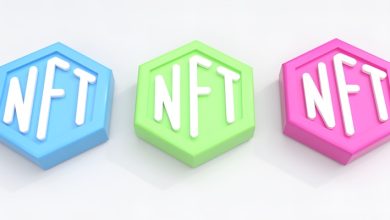The Evolution of Stablecoins: USDT vs. USDC vs. DAI

- Understanding the concept of stablecoins
- The rise of USDT: Tether’s controversial journey
- USDC: Coinbase’s trusted stablecoin
- DAI: Exploring the decentralized stablecoin
- Regulatory challenges and implications for stablecoins
- Comparing USDT, USDC, and DAI: which stablecoin suits you best?
Understanding the concept of stablecoins
Stablecoins are a type of cryptocurrency that aims to maintain a stable value by pegging it to a reserve asset such as the US Dollar. This stability is achieved through various mechanisms, including collateralization, algorithmic adjustments, and regulation.
One of the most popular stablecoins is USDT, which is issued by Tether and claims to be backed 1:1 by USD reserves. Another stablecoin, USDC, is issued by Circle and Coinbase and is also pegged to the US Dollar, with regular audits to ensure transparency and trust.
On the other hand, DAI is a decentralized stablecoin that operates on the Ethereum blockchain and is backed by a basket of assets. This algorithmic stablecoin relies on smart contracts and user collateral to maintain its peg to the USD.
Understanding the concept of stablecoins is crucial for investors and traders looking to hedge against the volatility of traditional cryptocurrencies. By choosing a stablecoin with a solid reserve, transparent audits, and a reliable pegging mechanism, users can mitigate risks and preserve the value of their assets in times of market fluctuations.
The rise of USDT: Tether’s controversial journey
The rise of USDT, also known as Tether, has been a controversial journey in the world of stablecoins. USDT was created to provide a stable alternative to volatile cryptocurrencies like Bitcoin and Ethereum. However, it has faced scrutiny for its lack of transparency and alleged manipulation of its reserves.
Despite these controversies, USDT has become one of the most widely used stablecoins in the cryptocurrency market. Its popularity is due in part to its close ties to the Bitfinex exchange, as well as its ability to maintain a stable value pegged to the US dollar.
While USDT has faced criticism for its lack of regulatory oversight and transparency, it remains a popular choice for traders and investors looking to hedge against the volatility of other cryptocurrencies. As the cryptocurrency market continues to evolve, the future of USDT and its place in the stablecoin ecosystem remains uncertain.
USDC: Coinbase’s trusted stablecoin
The USDC stablecoin, offered by Coinbase, has gained significant trust and popularity in the cryptocurrency market. It is pegged to the US dollar on a 1:1 ratio, making it a reliable store of value for traders and investors. USDC operates on the Ethereum blockchain, providing transparency and security for users. With regular audits and compliance with regulations, USDC has established itself as a trustworthy stablecoin in the industry.
DAI: Exploring the decentralized stablecoin
Dai is a decentralized stablecoin that operates on the Ethereum blockchain. Unlike USDT and USDC, which are centralized stablecoins backed by fiat currency, Dai is backed by collateral in the form of other cryptocurrencies. This unique feature gives Dai stability and decentralization, making it a popular choice among users in the cryptocurrency space.
One of the key advantages of Dai is its decentralized nature, which means that it is not controlled by any single entity. This decentralized governance model sets it apart from USDT and USDC, which are subject to the regulations and policies of their issuing companies. Dai’s decentralization also means that it is more resistant to censorship and government interference, making it a reliable option for users seeking financial freedom.
Another important aspect of Dai is its stability mechanism, which is designed to keep the value of the stablecoin pegged to the US dollar. This stability is achieved through a system of smart contracts known as the Dai Credit System, which automatically adjusts the supply of Dai based on market demand. This mechanism helps to ensure that Dai remains stable and reliable as a medium of exchange and store of value.
Regulatory challenges and implications for stablecoins
One of the main challenges facing stablecoins is the regulatory environment in which they operate. Various regulatory bodies around the world are still trying to figure out how to classify and regulate stablecoins, which can make it difficult for stablecoin issuers to navigate the legal landscape.
For example, in the United States, stablecoins are subject to a complex web of regulations from different agencies such as the SEC, CFTC, and FinCEN. This can create uncertainty for stablecoin issuers and users alike, as they may not know which rules they need to comply with.
Additionally, stablecoins that are deemed to be securities may be subject to additional regulations, such as registration requirements and disclosure obligations. This can add an extra layer of complexity for stablecoin issuers, as they must ensure that they are in compliance with securities laws.
Furthermore, stablecoins that are used for cross-border transactions may face additional challenges, as they must navigate the regulatory frameworks of multiple jurisdictions. This can be particularly challenging in countries with strict capital controls or anti-money laundering laws.
Overall, the regulatory challenges facing stablecoins are significant and can have a major impact on their adoption and use. Stablecoin issuers must work closely with regulators to ensure that they are in compliance with all relevant laws and regulations, in order to build trust and confidence in their stablecoin offerings.
Comparing USDT, USDC, and DAI: which stablecoin suits you best?
When it comes to choosing a stablecoin, it’s important to consider the features and benefits of each option. USDT, USDC, and DAI are three of the most popular stablecoins on the market, each with its own unique characteristics.
- USDT, also known as Tether, is one of the oldest stablecoins and is pegged to the value of the US dollar. It has a large market cap and is widely accepted on many cryptocurrency exchanges. However, there have been concerns about its transparency and backing.
- USDC, created by Coinbase and Circle, is another stablecoin pegged to the US dollar. It is regulated and audited regularly, providing users with more transparency and security. USDC has gained popularity for its reliability and trustworthiness.
- DAI, on the other hand, is a decentralized stablecoin created on the Ethereum blockchain. It is not pegged to a fiat currency but instead maintains its stability through a system of smart contracts. DAI offers users more decentralization and autonomy, making it an attractive option for those who value these principles.
Ultimately, the best stablecoin for you will depend on your individual needs and preferences. If you prioritize transparency and regulation, USDC may be the most suitable choice. If decentralization and autonomy are more important to you, DAI could be the better option. Consider the features of each stablecoin carefully before making your decision.



